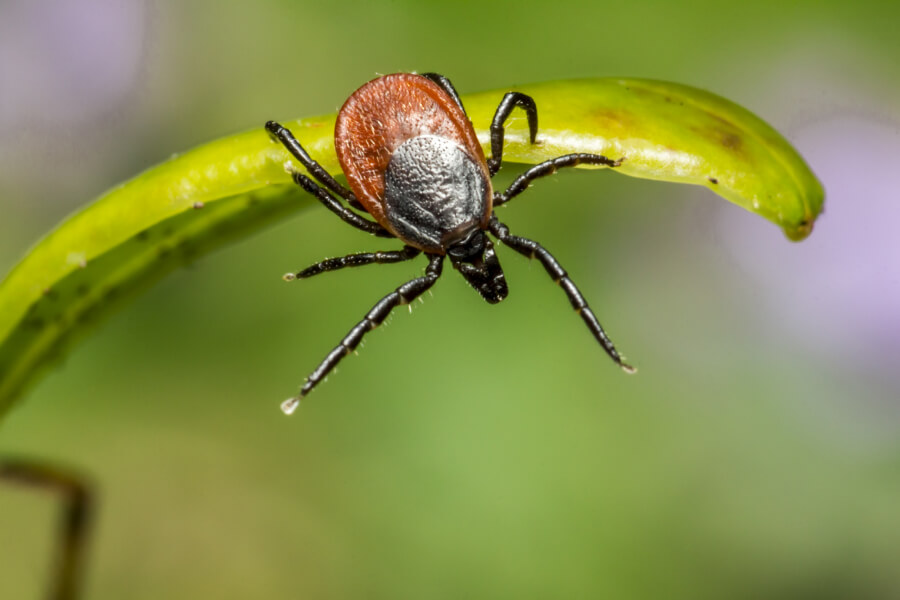Crimean-Congo Hemorrhagic Fever (CCHF) is a severe viral disease transmitted primarily by ticks. It is named after the regions where it was first identified—Crimea and Congo.
The virus responsible, a member of the Bunyaviridae family, causes outbreaks that are characterized by high fever, severe bleeding, and a high mortality rate.
The virus is one of the few tick-borne pathogens that can cause severe disease in humans.
Key Points:
- CCHF is a tick-borne viral disease.
- Symptoms range from mild to severe, including hemorrhage.
- The disease has a high mortality rate, often between 10-40%.
- No vaccine is currently available, but research is ongoing.
Signs and Symptoms
The incubation period for CCHF varies from 1 to 13 days, depending on how the virus was transmitted. Symptoms typically begin suddenly, with fever, muscle ache, dizziness, neck pain, and stiffness. Other symptoms include:
- Headache and sore eyes
- Sensitivity to light
- Nausea, vomiting, and diarrhea
- Abdominal pain and sore throat
As the disease progresses, severe symptoms such as mood swings, confusion, and bleeding from multiple sites (nose, gums, urine, stool) may occur. This hemorrhagic phase is critical and requires immediate medical attention.
Risk Factors
Geographic Location: CCHF is most common in Africa, Asia, Eastern Europe, and the Middle East, particularly in areas with a high prevalence of the Hyalomma tick species.
Occupational Risk: Farmers, slaughterhouse workers, veterinarians, and healthcare workers are at higher risk due to their increased exposure to livestock and potential contact with infected blood.
Animal Contact: People who work with animals or in rural areas where ticks are common are more susceptible to tick bites, increasing the risk of infection.
How It Spreads
CCHF spreads primarily through tick bites, particularly from ticks of the Hyalomma genus. Additionally, direct contact with the blood or bodily fluids of infected animals or humans can transmit the virus. Human-to-human transmission can occur in healthcare settings if proper precautions are not followed, emphasizing the need for strict infection control measures.
Diagnosis and Testing
Diagnosing CCHF involves a combination of clinical assessment and laboratory testing. Early symptoms are often nonspecific, making diagnosis challenging without laboratory confirmation. Key testing methods include:
- RT-PCR (Reverse Transcription Polymerase Chain Reaction): Detects viral RNA in blood samples.
- ELISA (Enzyme-Linked Immunosorbent Assay): Identifies antibodies or antigens related to the CCHF virus.
- Virus Isolation: Culturing the virus in specialized laboratories.
Important Considerations:
- Rapid diagnosis is crucial for managing outbreaks and initiating appropriate treatment.
- Handling samples requires high biosafety precautions due to the virus’s infectious nature.
Treatment and Management
Currently, there is no specific antiviral treatment for CCHF. Management focuses on supportive care to manage symptoms and complications. This includes:
- Fluid and electrolyte balance: To prevent dehydration and maintain organ function.
- Blood products: Transfusions may be necessary to manage severe bleeding.
- Antiviral medication: Ribavirin, an antiviral drug, has shown some efficacy in early treatment stages but is not universally available or approved.
Recovery and Follow-up: Patients recovering from CCHF need monitoring for potential long-term effects, including psychological impacts due to the severity of the illness.
Prevention and Control
Personal Protection: Preventing tick bites is the primary method of reducing CCHF risk. This can be achieved through:
- Using insect repellents on skin and clothing.
- Wearing long-sleeved clothing and pants.
- Performing regular tick checks after outdoor activities.
Public Health Measures: Effective public health strategies include:
- Educating at-risk populations about prevention.
- Implementing vector control programs to reduce tick populations.
- Ensuring healthcare workers follow strict infection control protocols to prevent nosocomial transmission.
Outbreaks and Epidemiology
Recent Outbreaks: CCHF outbreaks are sporadic but can have significant public health impacts. Recent outbreaks have been reported in various regions, highlighting the need for ongoing vigilance and rapid response mechanisms.
Global Impact: CCHF remains a significant public health threat in endemic regions, with implications for global health security due to the potential for spread via international travel and trade.
Research and Vaccines
Ongoing Research Efforts: Scientists are exploring various aspects of CCHF, including the virus’s genetics, the ecology of tick vectors, and the disease’s pathology. This research is critical for developing new diagnostic tools and therapeutic strategies.
Development of Vaccines: While there is currently no approved vaccine for CCHF, several candidates are in various stages of development. Efforts are focused on creating a safe and effective vaccine to protect at-risk populations, particularly healthcare workers and people in endemic areas.
Resources and Further Reading
For more detailed information on CCHF, the following resources can be invaluable:
- World Health Organization (WHO): Provides comprehensive guidelines and updates on CCHF.
- Centers for Disease Control and Prevention (CDC): Offers detailed fact sheets and prevention tips.
- National Health Service (NHS): Useful for general public health information and advice.
Conclusion
Understanding Crimean-Congo Hemorrhagic Fever is crucial for anyone living in or traveling to endemic areas, as well as for healthcare professionals. While the disease is severe, taking preventive measures and being aware of the symptoms can significantly reduce the risk of infection and improve outcomes. As research continues, there is hope for more effective treatments and the development of a vaccine to combat this dangerous virus.
FAQs
How to prevent Crimean-Congo hemorrhagic fever?
Avoiding tick bites is the most effective prevention strategy. Use insect repellents, wear protective clothing, and perform regular tick checks. Public health education and vector control are crucial in endemic areas.
What are the symptoms of Crimean-Congo hemorrhagic fever?
Early symptoms include fever, muscle ache, dizziness, and sensitivity to light. Severe cases can lead to hemorrhage, mood swings, and confusion. Symptoms typically appear within 1-13 days of exposure.
How is Crimean-Congo hemorrhagic fever transmitted to humans?
Primarily through tick bites, especially from Hyalomma ticks. Contact with infected animal blood or tissues can also spread the virus. Human-to-human transmission is possible, particularly in healthcare settings without proper infection control.







